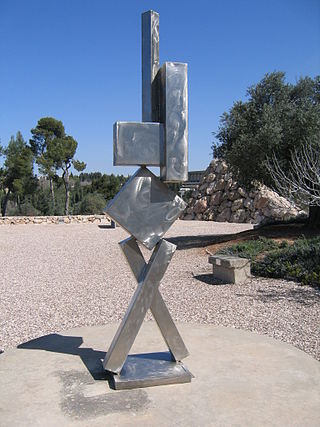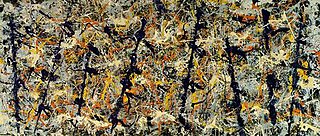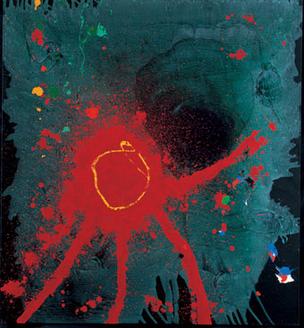
Todd Williamson (born January 24, 1964, in Cullman, Alabama) is an American artist specializing in contemporary abstract expressionism.

Todd Williamson (born January 24, 1964, in Cullman, Alabama) is an American artist specializing in contemporary abstract expressionism.

Todd Williamson was born and raised in Cullman, Alabama. In 1984 he began his artistic career with art and music study at Belmont University in Nashville, Tennessee. Come 1986, Williamson was recruited to the University of Alabama at Birmingham to work with their theatre for one year. He then returned to the Belmont University and concluded his study program with a BA in 1988. In the following year, Williamson moved to California and studied at California State University, and UCLA, working towards his MA. Since 2004, Williamson works as a professional artist in Los Angeles. [1]
Besides being stimulated by the works of Mark Rothko, Ellsworth Kelly, Barnett Newman and Helen Frankenthaler, his works include elements of classical modern art, with references to the Chiaroscuro technique, and to the California Light and Space movement of the 1960s and 70's. Williamson has been deeply influenced by his early musical studies. His works attempt to show the connection between art and the expression of music, [2] the objective being to give the viewer an all-embracing artwork ("Gesamtkunstwerk") of "musical art" or "visual music". [3]

Williamson's paintings are structured color compositions, effected by the abstract expressionism, and an enhancement of the Color field painting. While the color field painting is marked by large-scale, homogeneously filled fields, Williamson interprets this style in a new manner: His works are mostly composed of multilayered color grids which differentiate themselves symmetrically of each other or go over into each other. [4] He does this by using a variety in thickness of paint as well as a series of lines and grids which create a framework to control the chaos and emotion of the painted color-fields, creating an ethereal and multi-layered surface. The borders which are typical for the color field painting become blurred; to its place steps the impression of the complete works which connects the structure of the underground with the play of the colors.
Williamson dealt first with figurative art, and has developed mono-chromatic works since about 1990. His mono-chromatic works are not necessarily limited to the dominance of only one color. However, many of his latest works are characterized by parallel lines which move in both horizontal, and vertical direction. [5] He often uses contrasts in the form of bright and dark dividing lines which split his work by adding and leaving out light. For example, at the prelude and the end of a partiture. Williamson tries in this manner to create a bridge from expressionist painting to musical expressionism. [6]
Todd Williamson's works have been shown in over 60 exhibitions worldwide. His work is in numerous collections around the world and was included in the permanent collection of the Pio Monte della Misericordia in 2015 where it hung next to Caravaggio's Seven Works of Mercy for a period of time. Besides single exhibitions e.g. in Milan, Montreal, Paris, Rome and Venice, joined exhibitions were put in Abu Dhabi, Berlin, Shanghai and Peking together with artists like Ed Ruscha, Jenny Holzer, Chuck Close and Robert Ryman. Williamson has also done a number of public art works including the Sun America Building in Century City, the California Bar Association Los Angeles, the Nashville International Airport as well as the Aria Hotel and Casino in Las Vegas. [7]

Abstract expressionism in the United States emerged as a distinct art movement in the immediate aftermath of World War II and gained mainstream acceptance in the 1950s, a shift from the American social realism of the 1930s influenced by the Great Depression and Mexican muralists. The term was first applied to American art in 1946 by the art critic Robert Coates. Key figures in the New York School, which was the epicenter of this movement, included such artists as Jackson Pollock, Franz Kline, Mark Rothko, Norman Lewis, Willem de Kooning and Theodoros Stamos among others.

Hard-edge painting is painting in which abrupt transitions are found between color areas. Color areas often consist of one unvarying color. The Hard-edge painting style is related to Geometric abstraction, Op Art, Post-painterly Abstraction, and Color Field painting.

Willem de Kooning was a Dutch-American abstract expressionist artist. Born in Rotterdam, in the Netherlands, he moved to the United States in 1926, becoming an American citizen in 1962. In 1943, he married painter Elaine Fried.

Lenore "Lee" Krasner was an American Abstract Expressionist painter and visual artist active primarily in New York. She received her early academic training at the Women's Art School of Cooper Union, and the National Academy of Design from 1928 to 1932. Krasner's exposure to Post-Impressionism at the newly opened Museum of Modern Art in 1929 led to a sustained interest in modern art. In 1937, she enrolled in classes taught by Hans Hofmann, which led her to integrate influences of Cubism into her paintings. During the Great Depression, Krasner joined the Works Progress Administration's Federal Art Project, transitioning to war propaganda artworks during the War Services era.
The New York School was an informal group of American poets, painters, dancers, and musicians active in the 1950s and 1960s in New York City. They often drew inspiration from surrealism and the contemporary avant-garde art movements, in particular action painting, abstract expressionism, jazz, improvisational theater, experimental music, and the interaction of friends in the New York City art world's vanguard circle.

Color field painting is a style of abstract painting that emerged in New York City during the 1940s and 1950s. It was inspired by European modernism and closely related to abstract expressionism, while many of its notable early proponents were among the pioneering abstract expressionists. Color field is characterized primarily by large fields of flat, solid color spread across or stained into the canvas creating areas of unbroken surface and a flat picture plane. The movement places less emphasis on gesture, brushstrokes and action in favor of an overall consistency of form and process. In color field painting "color is freed from objective context and becomes the subject in itself."

Blue Poles, also known as Number 11, 1952 is an abstract expressionist painting by American artist Jackson Pollock. It was purchased amid controversy by the National Gallery of Australia in 1973 and today remains one of the gallery's major paintings.

The Flagellation of Christ is a painting by the Italian Baroque painter Caravaggio, now in the Museo Nazionale di Capodimonte, Naples. It is dated to 1607, and may have been reworked by the artist in 1610. It is not to be confused with Christ at the Column, another Flagellation by Caravaggio of the same period.

Lyrical abstraction is either of two related but distinct trends in Post-war Modernist painting:
The Bay Area Figurative Movement was a mid-20th Century art movement made up of a group of artists in the San Francisco Bay Area who abandoned working in the prevailing style of Abstract Expressionism in favor of a return to figuration in painting during the 1950s and onward into the 1960s.

Ronald "Ron" Davis is an American painter whose work is associated with geometric abstraction, abstract illusionism, lyrical abstraction, hard-edge painting, shaped canvas painting, color field painting, and 3D computer graphics. He is a veteran of nearly seventy solo exhibitions and hundreds of group exhibitions.

Nicolas Carone belonged to the early generation of New York School Abstract Expressionist artists. Their artistic innovation by the 1950s had been recognized internationally, including in London and Paris. New York School Abstract Expressionism, represented by Jackson Pollock, Willem de Kooning, Franz Kline, Conrad Marca-Relli and others, became a leading art movement of the postwar era.
Raymond Parker (1922-1990) was an Abstract expressionist painter who also is associated with Color Field painting and Lyrical Abstraction. Ray Parker was an influential art teacher and an important Color Field painter and an instrumental figure in the movement coined by Clement Greenberg called Post-Painterly Abstraction.

Robert Standish is an American artist.

Edward Dugmore was an abstract expressionist painter with close ties to both the San Francisco and New York art worlds in the post-war era following World War II. Since 1950 he had more than two dozen solo exhibitions of his paintings in galleries across the United States. His paintings have been seen in hundreds of group exhibitions over the years.
Post-painterly abstraction is a term created by art critic Clement Greenberg as the title for an exhibit he curated for the Los Angeles County Museum of Art in 1964, which subsequently travelled to the Walker Art Center and the Art Gallery of Toronto.
John Millard Ferren was an American artist and educator. He was active from 1920 until 1970 in San Francisco, Paris and New York City.
Casper Brindle is an American painter and sculptor living and working in Los Angeles, California. Casper Brindle creates artwork that combines influences from both the light and space and finish fetish movements, as well as elements from Minimalism and Color Field painting. His work has been exhibited in the United States and internationally.
Albert Kostin (1892–1984) was an American painter, born Odesa. He started his career around 1912 in Paris, where he specialized in cubism. Later, in the US, he became a respected member of the New York School of abstract-expressionism. Albert Kostin was directly influenced by Pablo Picasso and worked with Jackson Pollock.
Renato Barisani was an Italian sculptor and painter.